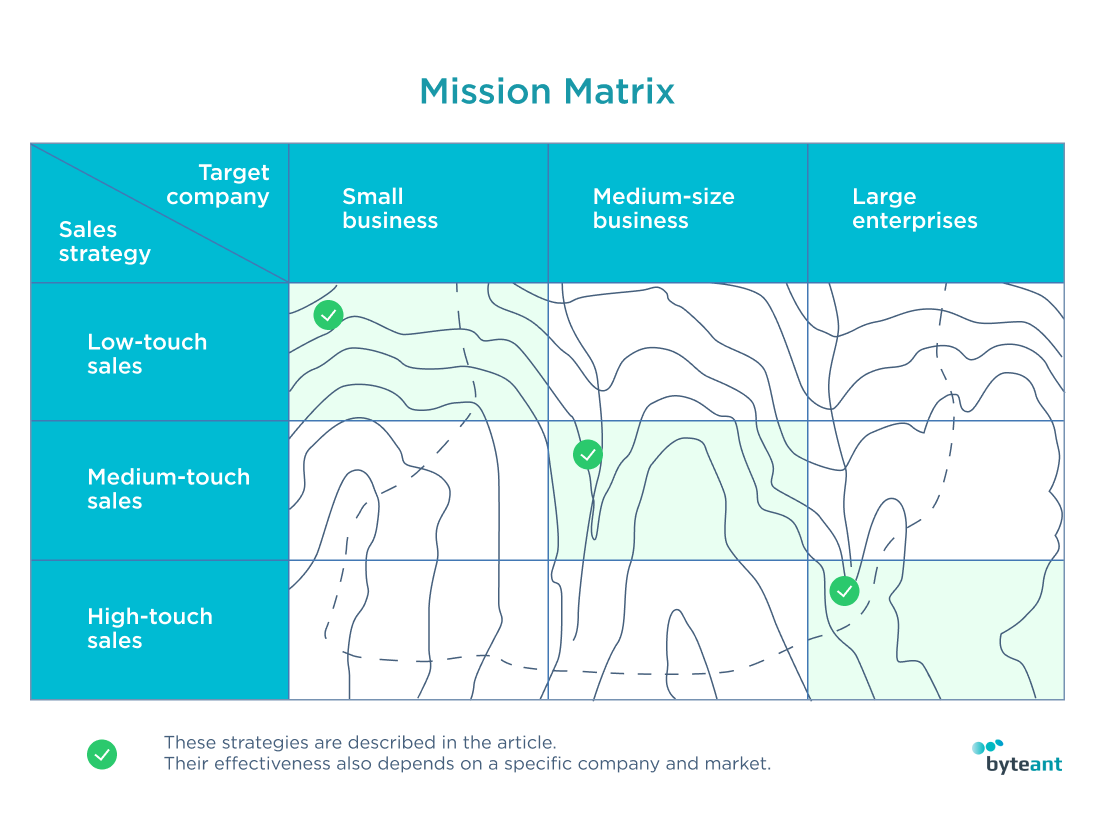View our Guide How to Build a Marketplace in 10 weeks x


Whether you are launching your first SaaS product or you are a serial startup founder, you should plan your go-to-market strategy beforehand. It is the basis of reaching your potential buyers at the right moment and turning them into loyal users.
Early in this blog, we already covered the basics of the go-to-market strategy for startups. Now, let’s advance on a SaaS GTM strategy and the best practices to build one.
First and foremost, users like to try a software product before buying it. Therefore, most SaaS businesses offer a trial period for free. By checking if the SaaS solution matches their business needs, users are more sure of their purchase decisions.
Meanwhile, the Close recommends keeping your trial periods to under 14 days, thus preventing user procrastination and cutting down churns. By shortening your sales cycle down to 3 weeks, you can reduce your customer acquisition expenses as well.
Another benefit of a trial period is that customers can self-educate on the SaaS solution without dealing with a sales representative. 3 out of 4 B2B users prefer this selling method over direct communication, Forrester research states.
As the competition on the global SaaS market grows, it’s getting more expensive to acquire new customers. A research of over 3000 SaaS businesses reveals that customer acquisition costs skyrocketed by 55% during the last five years.

At the same time, users are less inclined to pay with a 30% purchase decline during this period.
With these facts in mind, it is so much more important to plan your expenses, acquisition, and B2B go-to-market strategy.
Any GTM strategy should include the mission of your product, its target audience, marketing & sales strategies.
However, as a startup launcher, you should keep your messaging straightforward and clear. Make sure you understand your marketing strategy before expecting your team to implement it. By having multiple tactics in place, you risk to disperse your resources and not reach any goals at all.
Useful resources:
Go-to-market strategy for startups: a complete guide [+free template]
The proven process of developing a go-to-market strategy [HubSpot guide]
Let’s explore some of the SaaS go-to-market strategies of the famous SaaS companies.
Mailchimp is an email automation service that is available as a freemium model. The free app version lets you send up to 12 000 letters per month and have less than 2000 subscribers for free. Once you exceed this amount, you have to pay for the Paid plan.
Offering a large portion of their features for free, Mailchimp is a brilliant alternative to costly email tools existing in the market. Since Mailchimp targets primarily small businesses, its SaaS go-to-market strategy is perfect for users with a limited budget. Starting using the service for free, customers eventually face feature limitations and upgrade to the paid version.
Initially, Mailchimp created a product to answer the market demand for an easy-to-use email marketing tool. They used word-of-mouth marketing to acquire its first customers. The company was growing steadily over the years. As they grew, they adjusted their pricing policies for more flexibility.
The service used SEO, PR, and digital marketing tactics to create awareness. Mailchimp’s use case is an example of a product-based B2B go-to-market strategy for SaaS startups. It places software features at the center of a client acquisition strategy. SaaS companies like Slack, Grammarly, and HubSpot also used this approach.
As a SaaS business, you should clearly define the target personas that you’re reaching. For B2B products, they can be:
Once you define your target audience, you can study their preferences, challenges, and set the appropriate SaaS pricing & promotion.

Based on the target audience, you can choose one of the following sales strategies:
We will explain each of them further in this article.
Remember: depending on a sales strategy and target audience you choose, you can get different results. This mix is called the mission matrix. Let’s explore it in more detail.
Cost-per-acquisition: low
These tactics mean that you minimize the work of your sales team in the initial purchase stages. David Skok calls it a touchless conversion sales model, which sounds a bit like magic.
What it actually means is that your potential customers make a purchase or enter your sales funnel without direct interaction with your sales representatives. In the case with SaaS startups, it can have a form of a simple sign up for a free trial period.
You may spend time and resources on driving traffic to your website, promoting your SaaS solution via digital channels and PPC, although the final sign up process happens automatically.
It works well for products with a long-term sales process, preventing annoying sales calls and cold emails.

Typeform is a go-to-market strategy case study with a low-touch sales tactic. It focuses on inbound marketing and provides value fast enough to convert users. The first purchase happens automatically without your input.
Its product is easy to onboard and flexible, serving various business needs: passing quizzes, getting employee feedback, or selling products online. The free plan includes three forms with up to 10 questions per survey. You can also add a layout to your webpage. Once a free version doesn’t match your needs anymore, you can upgrade to Essentials plan at 35 USD per month, or Professional at the same price.
Pedro Magrico, the Director of Growth at Typeform, shared some secrets of their growth. He states creating an easy and fun onboarding process crucial to their development. Once a user clicks on a ‘Get started free’ button, he sees the 20-seconds video explaining the benefits of SaaS offer and teaching how to use a service. Even if users are not registered yet, they can start using the service right away.
By delivering value within the Free plan and adding a Typeform signature at the bottom of every survey, Typeform turned their product into the best lead generator. The viral effect ensured a steady flow of customers to this SaaS company. The enjoyable user experience made them upgrade to Premium.
High-touch sales mean a significant work of your sales team on the way to user conversion (and after it). This model usually bases on partnerships and trust between the two parties. Due to complex decision making at large businesses, you need to convince the whole team to buy your product. Meanwhile, large companies bring lower churn rates and makeup to 80% of software vendors’ income.
Cost-per-acquisition: high
Salesforce entered the market as a simple-to-use CRM solution. It would work error-free with other systems, be fast to set up, and fast-running. Beginning with aggressive marketing tactics, Salesforce announced the end of software that complicates salespeople’s work.

With a clear mission to create an accessible fast-functioning product, the SaaS company started building a community around it. They organized events, conferences, and competitions. However, its main force was a tight alignment between sales, marketing, and software. Thanks to a transparent value offer that matched the audience’s pain points, Salesforce grew from $5.9 million in income in 2001 to $50.9 million in 2003.
They offered a free product version for five users maximum at any company. After a user enjoyed using it without any registration, they upgraded quickly to the paid version. An important point is also that the agency offered two ways to expand the usage to serve each team’s needs. Later on, they started to build other products supporting the core offering and adding additional streams of revenue.
If you decide to reach large corporations, it’s crucial to define the decision-makers in your SaaS GTM strategy. Focus on those stakeholders who make the purchase decision. Then, you can adjust your marketing and messaging to those who use your product.
Aligning your sales and marketing in this approach can make or break your market entry. As both marketing and sales should understand who they are targeting, plan the inbound marketing strategy and outbound sales workflow.
As you may guess, this SaaS go-to-market strategy assumes the combination of autonomous user onboarding with salespeople support.
Within this approach, you need to find the right balance of customer support help and self-managed purchase. In other words, you need to master a hybrid selling strategy.
Some elements of growth include partnerships, free trial period, a simple setup process with flexible pricing, inbound marketing, targeting middle-size businesses with the right messaging.
Atlassian - a striking example of a go-to market strategy for startups
Image source: DataRespons.com
Rather than hiring a large team of lead generators, Atlassian focused on making the product sell itself and provide little sales support. Thus, they made their SaaS offering:
What matters, Atlassian realized the importance of API extensions to apply the product in various use cases. This way, the SaaS offering remained simple to use and easy to extend at the same time.
Later on, the company launched a dedicated marketplace to enable exploring the apps for Atlassian solutions. The marketplace brought $300 million of sales per year.
Atlassian team invested in SEO to make their products easy-to-find and grow brand awareness. Users can also access the solution via Jira, Bitbucket, and Confluence applications.
Once again, the onboarding is as easy as a breeze; no need to create an account or enter the user’s data. So any business user can try the product out. After the installation, a user gets a free month of use with the ability to add more extensions.
The three models above are the main methods of planning a go-to-market strategy for SaaS startups.
The right one for you will depend on several factors:
The budget you are ready to invest in sales and marketing.
The main thing you need to understand is how you are going to get the first 100 users. Calculate how much each user will cost you based on the marketing tactics, sales, and time frames. With a quality software implementation and the right value proposition, you can make your go-to-market a success. Just make sure you have qualified professionals on board before you begin. ByteAnt team can help to implement your idea and make it technically superb.
However, remember to plan your SaaS GTM strategy and customer acquisition. The right matrix mix is the foundation of your further product growth.